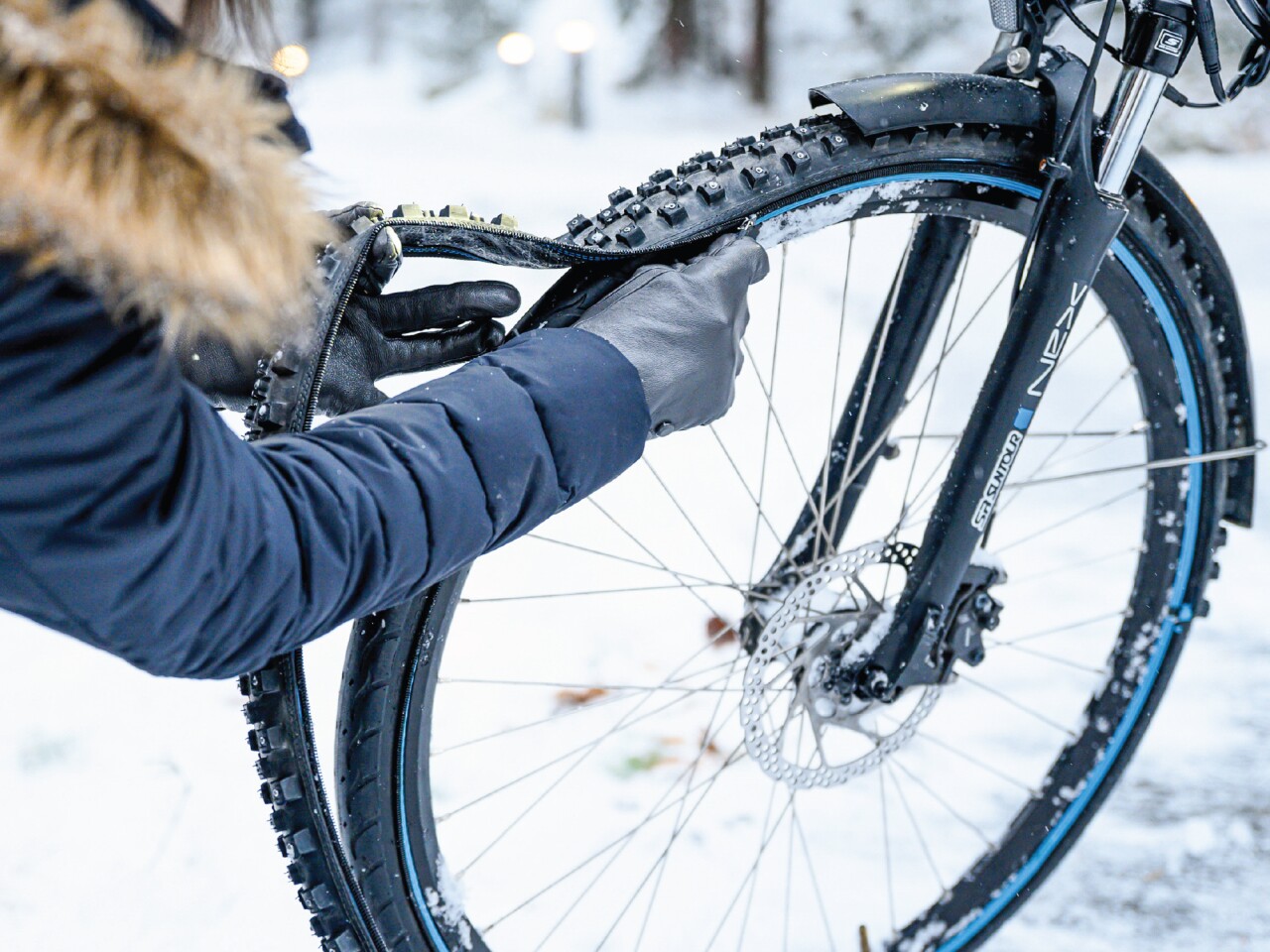It was three years ago that we first heard about the Norwegian reTyre system, which lets cyclists zip specialized tread "skins" on and off of a set of base tires. A new version is now on the market, which addresses some of the shortcomings of the original.
To recap our previous coverage, reTyre consists of a pair of smooth base tires that stay on the bike at all times, along with interchangeable treads (known as skins) that can be zippered onto or off of those tires as needed. If a commuter has to ride on icy roads, for instance, they can zip on the studded skins. And if they want to do some light off-road riding, they can zip on the lugged skins. For regular riding on smooth, dry streets, the base tires can be used on their own.
We generally liked the system when we reviewed it, although we did notice a couple of flaws. For one thing, the skins tended to disconcertingly squirm against the underlying base tire, particularly when cornering. Additionally, the point at which the two ends of each skin met produced a noticeable bump with every wheel revolution.
Things have apparently changed, however, with the new 3rd-generation system.
reTyre COO Alexander G. Gjørven tells us that the squirminess of the 2nd generation has been addressed by moving the base tire's zipper lower down on its sidewall. He states that doing so makes for a tighter fit, but not so tight that the zipper is difficult to do up – as has always been the case, a retainer for the zipper tab keeps it from accidentally coming undone.
What's more, the exact location of the base tire's zipper is optimized for each batch.
"Depending on the temperature when a tire is produced, the size of a bicycle tire for any brand may vary up to 15 percent, so in our QC [quality control] we now measure all batches of tires that come to our assembly factory and adjust the height on where we sew the zipper on the sidewall, down to as little as 0.5 mm up or down to secure optimized fit," Gjørven tells us.

The "bump," meanwhile, was apparently due to an inconsistency in the tread pattern at one end of the skin. Gjørven says this been addressed by extending the existing pattern all the way from one end to the other, so there's no gap where they meet. Additionally, an underlying plastic "tongue" that was previously used to align the two ends is no longer required.
Should you be interested, the 3rd-gen reTyre system is available now via the link below. The base tire – which comes in 26, 27.5, 28 and 29-inch sizes – sells for €29 (about US$35) per tire. The skins include the moderately studded Winter Traveler, the more heavily studded Ice Racer, the dirt road-oriented Gravel Chaser, and the deeper-lugged Trail Rider. They range in price from €38 to €74 ($45 to $89) per skin.
reTyre is demonstrated in the following video.
Source: reTyre





